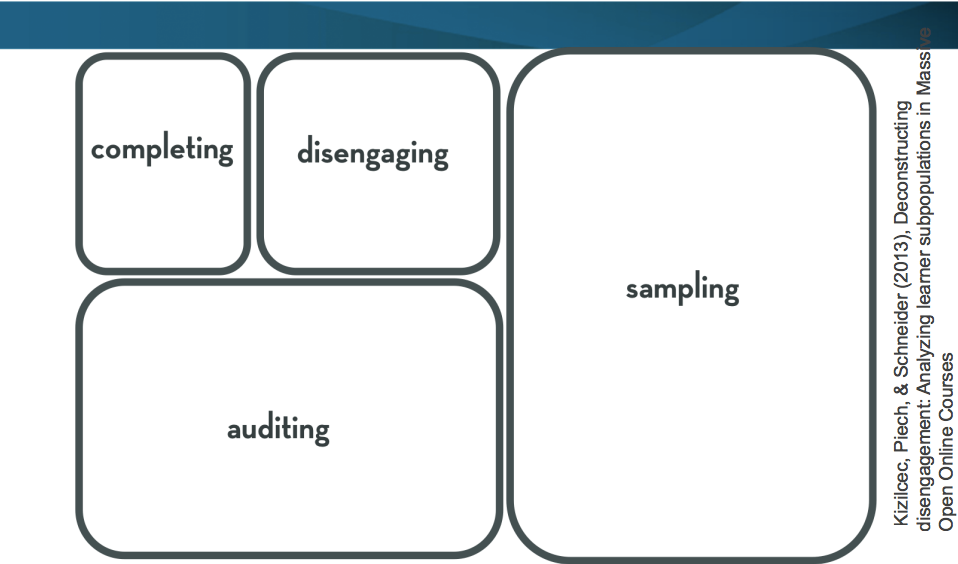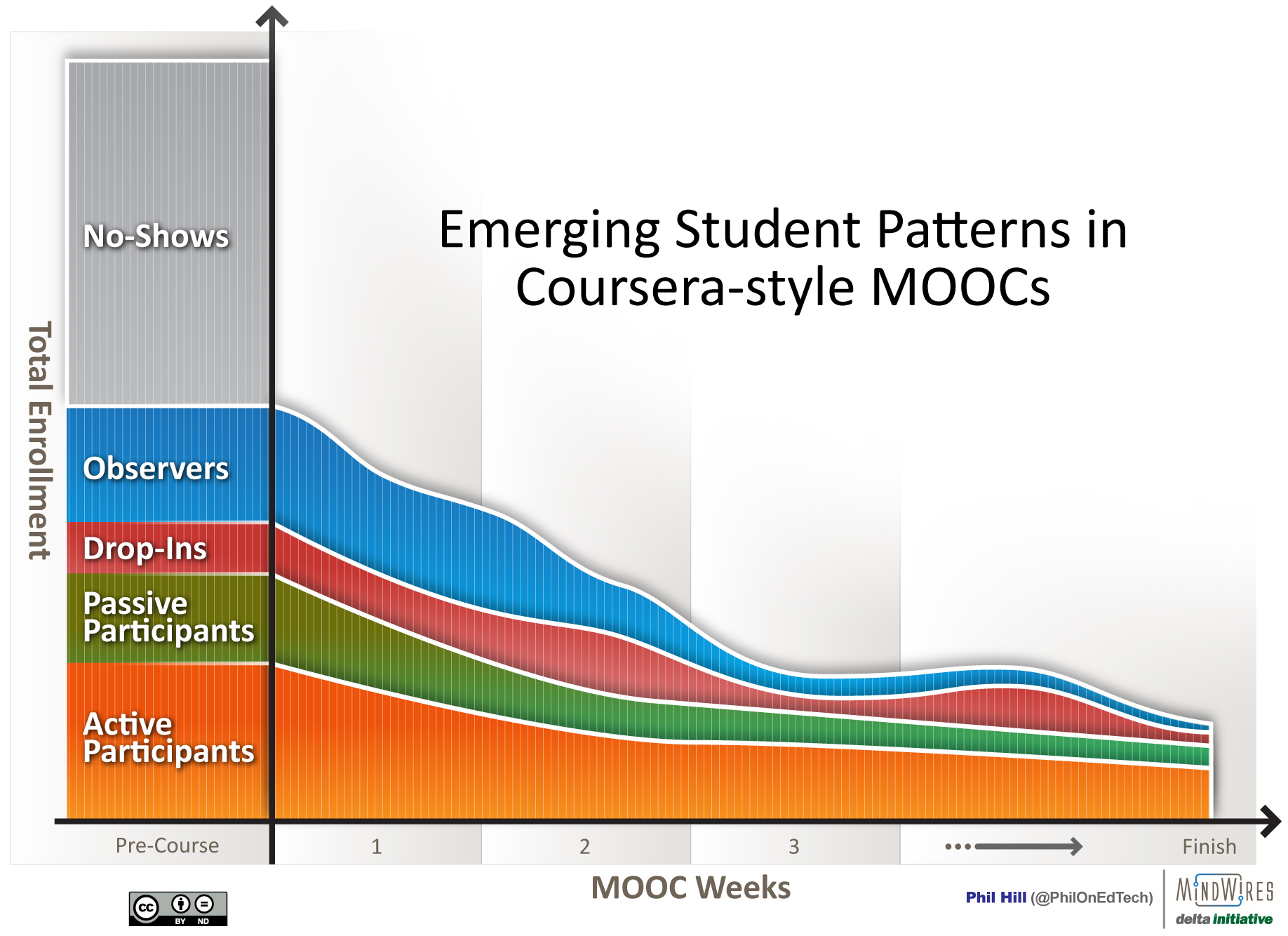Michael and I had the privilege of leading off the ELI Online Spring Focus Session on MOOCs (taking place today, Apr 3, and tomorrow). Thanks to Stephen Downes, we have a good set of notes on our presentation “Everything You Thought You Knew About MOOCs Could Be Wrong” (program & resources, notes) as well as the other sessions already on each of the sessions on his blog. You know, I think he actually believes this stuff about learner-generated content and self-forming communities . . . In all seriousness, this is a great session by ELI, great notes by Stephen, and it’s instructive to see the various channels such as chat, Twitter, Google+, and blogs tied to the session (most using #elifocus).
There was an interesting presentation from Seth Anderson (Duke), Amy Collier (Stanford), Cassandra Horlii (California Institute of Technology) titled “Designing and Implementing MOOCs that Maximize Student Learning” (program & resources, notes) that gives additional insight into MOOC student types. Quoting from Stephen’s notes:
In most of the MOOCs Stanford has offered, fewer than half the students have come from North America. Nearly half the people in a MOOC may not have a knowledge of English as a first language. They have a more varied educational and cultural background than in traditional courses.
The majority of active users say they’re taking the course for fun or a challenge, rather than a credential. The tendency to judge MOOCs based on completion rates overlooks the reasons why people join a MOOC. The majority engage in sampling behaviour – like the people in this webinar. Many are MOOC auditors, but they don’t engage, and they aren’t motivated by completion records.
This is an important aspect of MOOCs and open courses in general that gets missed by popular media and even by some MOOC faculty. The students have varying goals and behavior within a course, and it is a mistake to assume they should converge on a common goal and set of behaviors.
The categories are described in more in detail in the paper “Deconstructing Disengagement: Analyzing Learner Subpopulations in Massive Open Online Courses”. First, the basic demographics:
Our analysis of learner trajectories is based on three com-puter science courses that vary in their level of sophistication: “Computer Science 101” covers high school level content (HS-level), “Algorithms: Design and Analysis” covers undergraduate level content (UG-level), and “Probabilistic Graphical Models” is a graduate level course (GS-level). Table 1 provides basic demographic information and summarizes how many learners were active on the course website at any point in time (as opposed to simply enrolling and never participating). In all three courses, the vast majority of active learners are employed full-time, followed by graduate and undergraduate students. Moreover, most learners in the UG-level and GS-level courses come from technology-related industries. The majority of learners in the UG-level course report to hold a Master’s or a Bachelor’s degree. Geographically, most learners are located in the United States, followed by India and Russia.
Then, the categories:
- Completing: Learners who completed the majority of the assignments offered in the class. Though these participants varied in how well they performed on the assessment, they all at least attempted the assignments. This engagement pattern is most similar to a student in a traditional class.
- Auditing: learners who did assessments infrequently if at all and engaged instead by watching video lectures. Students in this cluster followed the course for the majority of its duration. No students in this cluster obtained course credit.
- Disengaging: Learners who did assessments at the beginning of the course but then have a marked decrease in engagement (their engagement patterns look like Completing at the beginning of the course but then the student either disappears from the course entirely or sparsely watches video lectures.) The moments at which the learners disengage differ, but it is generally in the first third of the class.
- Sampling: Learners who watched video lectures for only one or two assessment periods (generally learners in this category watch just a single video). Though many learners “sample” at the beginning of the course, there are many others that briefly explore the material when the class is already fully under way.
This view of participants, based on the schools’ MOOC experience, is somewhat analogous to the five student patterns I previously described, assuming the following mapping:
- Completing = Active Participants
- Auditing = Passive Participants
- Disengaging = Drop-outs or people moving from Active Participant to Passive Participant to Observer
- Sampling = a combination of Observers and Drop-Ins
All in all, this was a very interesting first day of the focus session – I’m looking forward to more of the discussions tomorrow.


Weighing video viewing so heavily could be somewhat misleading. Having a slow connection, I download some video and all transcripts. This, I gather, is standard practice for students outside the US and especially one where access is limited.